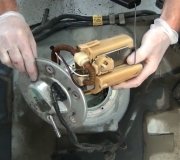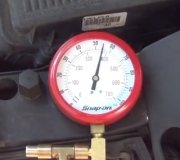Before going further I have to say that I could not find a new metal tank that also had the nozzle to connect the neck to the tank itself, and mine broke when I went to remove it, so I switched to plastic. I thought this would be possible since the fuel filter/pressure regulators are both types are non electric and fitting the systems together seemed very doable. The pump is used (it came in the tank, but seemed to work fine).
When I installed the new tank/filter/pump and put a couple gallons in, I turned the key and heard the new pump kick in for about 1 second, then shut off. Tried turning the key and I still get turnover, but no gas. A second check of the fuel pressure shows nothing. I checked the line all the way back to the fuel pressure regulator and the whole thing is clear (I used an air hose). The PCM in my vehicle has died in the past and I'm suspicious of it now, since it's not throwing errors anymore.
So ultimately the question is: where should I go now?
SPONSORED LINKS
Thursday, July 15th, 2010 AT 2:57 PM




